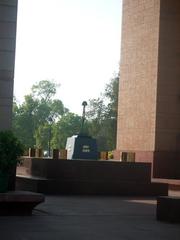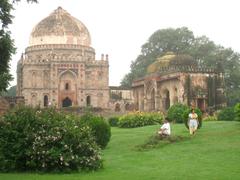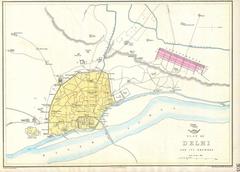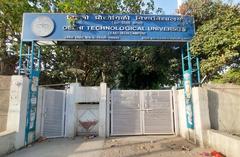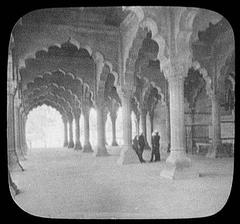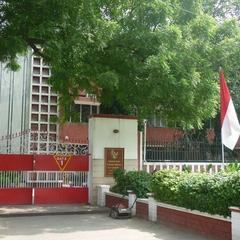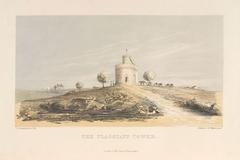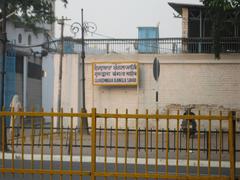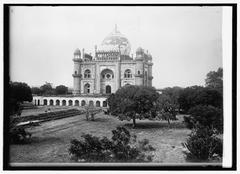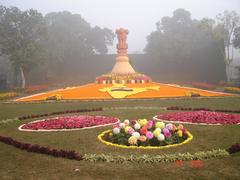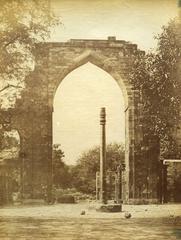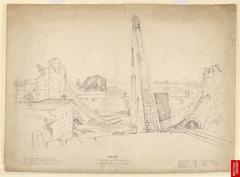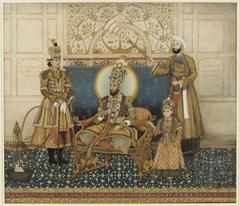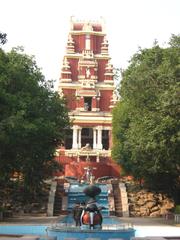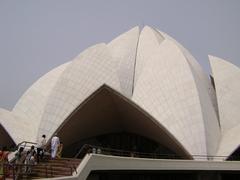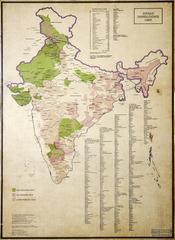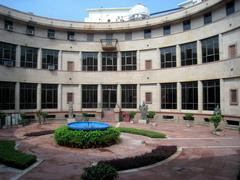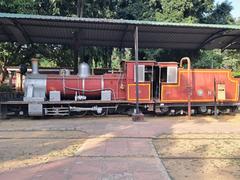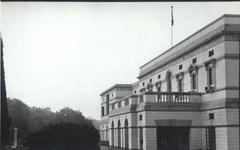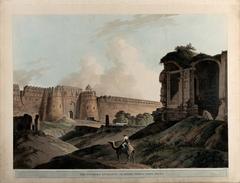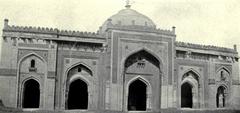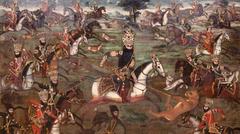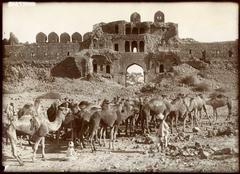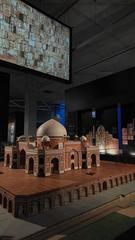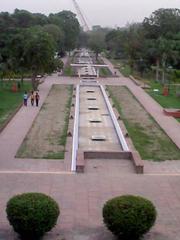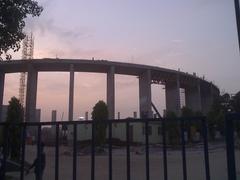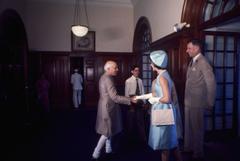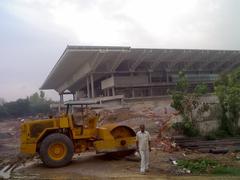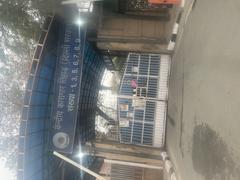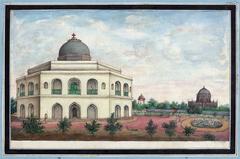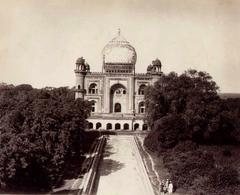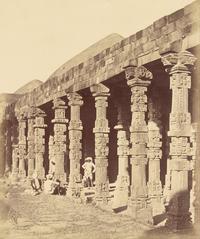Munda Gumbad: Visiting Hours, Tickets, and Comprehensive Guide to a Delhi Historical Site
Date: 14/06/2025
Introduction
Munda Gumbad, often referred to as the “Bald Dome” or “Headless Dome,” is a distinctive Sultanate-era monument situated in New Delhi. Most commonly found within the tranquil Deer Park of Hauz Khas, and occasionally referenced in the context of Lodi Gardens, Munda Gumbad offers a serene retreat from the city’s bustle while serving as a testament to the Indo-Islamic architectural legacy of Delhi’s medieval period. With its ribbed dome (now collapsed), horseshoe arches, and robust rubble masonry, the monument attracts history enthusiasts, architecture lovers, photographers, and casual visitors alike.
This guide brings together essential details on visiting hours, ticketing (notably, entry is free), accessibility, how to reach the site, architectural highlights, cultural significance, nearby attractions, and practical tips for a rewarding experience. For the most up-to-date information, consult official resources like the Archaeological Survey of India and Delhi Tourism websites. (Explore New Delhi’s Hidden Lodi Gardens Gem, Delhi Historical Sites Guide)
Table of Contents
- Introduction
- Historical Background and Significance
- Visiting Information
- Architectural Features
- Cultural Context and Events
- On-Site Experience & Photography Tips
- Nearby Attractions
- Practical Visitor Tips
- Frequently Asked Questions (FAQ)
- Summary & Final Tips
- References
Historical Background and Significance
Dating back to the late 13th or early 14th century, Munda Gumbad is a product of the Delhi Sultanate’s architectural innovation. Scholars attribute its origins variously to the Khalji, Tughlaq, and Lodi dynasties, with most consensus pointing to construction during Alauddin Khalji’s reign around 1235 CE (Yappe.in). The monument’s original purpose is subject to debate: it may have functioned as a royal pleasure pavilion, a watchtower, or a tomb. Its name derives from the collapsed dome, leaving a “bald” silhouette.
Strategically located by the historic Hauz Khas tank, Munda Gumbad was once central to the area’s urban and cultural landscape, symbolizing the Sultanate’s blend of Persian, Central Asian, and Indian architectural traditions (History Discussion).
Visiting Information
Visiting Hours and Tickets
- Hours: Open daily from 6:00 AM to 7:00 PM (timings may change seasonally; check official sources for updates).
- Entry Fee: Free for all visitors, as it is part of the public Deer Park and Hauz Khas District Park.
Accessibility and Facilities
- Accessibility: Paved paths lead from the main park entrances to the monument, but some uneven terrain and stairs may present challenges for wheelchairs or those with limited mobility.
- Facilities: Public restrooms are available near park entrances. Benches and shaded seating areas are scattered throughout Deer Park. Cafés and restaurants are plentiful in nearby Hauz Khas Village.
How to Reach
- By Metro: Hauz Khas Metro Station (Yellow Line) is nearest, about 1.5 km away.
- By Auto-Rickshaw or Taxi: Readily accessible from most parts of Delhi.
- By Car: Limited parking is available near Hauz Khas Village, particularly on weekends.
Architectural Features
Munda Gumbad stands as a square pavilion (approx. 10.4m per side) built with rubble masonry, a hallmark of Sultanate-era construction. Each side features a prominent horseshoe-shaped arch, providing both structural support and aesthetic elegance. The original dome has collapsed, resulting in the “bald” appearance, but remnants of the superstructure and visible staircases suggest a previously accessible upper storey or chhatri.
The monument’s symmetry and open design allowed for cross-ventilation, panoramic lake views, and use as a gathering or pleasure spot. The absence of elaborate ornamentation is characteristic of early Indo-Islamic architecture, focusing on form and proportion rather than decorative excess.
Cultural Context and Events
Munda Gumbad represents the Sultanate’s inclusive approach to public architecture—accessible, multifunctional, and integrated into the city’s social and natural fabric (Self Study History). Today, the monument serves as a backdrop for heritage walks and community events organized by local groups and NGOs. Its setting within Deer Park makes it a living heritage site that continues to foster public engagement.
On-Site Experience & Photography Tips
- Atmosphere: Expect a tranquil ambiance with the sounds of wildlife (deer, peacocks) and the sights of lush greenery and water bodies.
- Photography: Early mornings and late afternoons are best for soft, warm lighting. The monument’s arches and stark silhouette make for compelling compositions. Respect all signage and avoid climbing on fragile sections.
- Best Season: October to March offers comfortable temperatures and clearer air for outdoor exploration (Suzanne Wanders Delhi).
Nearby Attractions
- Hauz Khas Tank: Medieval reservoir and scenic centerpiece.
- Firoz Shah’s Tomb: Resting place of the Tughlaq sultan.
- Medieval Madrasa: Remains of an Islamic seminary.
- Hauz Khas Village: Vibrant area with boutiques, art galleries, and dining.
- Other Monuments: Lodi-period tombs and pavilions dotted through the park and adjacent areas.
Practical Visitor Tips
- Dress Code: Modest, comfortable attire recommended.
- Safety: The area is generally safe with regular security patrols; keep valuables secure.
- Health: Check Delhi’s air quality, especially in winter; carry water, sunscreen, and insect repellent.
- Accessibility: Be mindful of uneven paths and steps if mobility is a concern.
Frequently Asked Questions (FAQ)
Q: What are the visiting hours for Munda Gumbad?
A: Daily from 6:00 AM to 7:00 PM.
Q: Is there an entry fee or ticket required?
A: No, entry is free as the monument is within a public park.
Q: How do I reach Munda Gumbad?
A: By metro (Hauz Khas Station), auto-rickshaw, taxi, or car (limited parking near Hauz Khas Village).
Q: Are guided tours available?
A: Occasionally, heritage walks and tours are organized by local groups and NGOs; check with Delhi Tourism or park information kiosks.
Q: Is the monument wheelchair accessible?
A: Some access paths are paved, but uneven terrain and steps near the monument limit full accessibility.
Summary & Final Tips
Preserve the site’s legacy by respecting guidelines, avoiding damage, and participating in heritage events when possible. Munda Gumbad is not just a glimpse into Delhi’s past—it’s a living part of the city’s vibrant present.
References
- Munda Gumbad Visiting Hours, Tickets & History | Explore New Delhi’s Hidden Lodi Gardens Gem
- Munda Gumbad: Visiting Hours, Tickets, and Architectural Highlights of Delhi’s Historic Pavilion
- Delhi Historical Sites Guide
- Munda Gumbad Visiting Hours, Tickets, and Guide to Delhi’s Historic Hauz Khas Site
- Society and Culture during the Delhi Sultanate
- Delhi Medieval Religious and Cultural Life
- Practical Things to Know Before Going to Delhi


